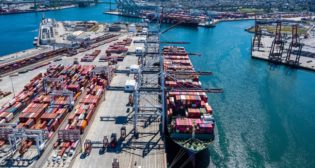
Railinc launches DDCT system
Written by William C. Vantuono, Editor-in-ChiefRailinc Corp. said Tuesday its new Damaged and Defective Car Tracking (DDCT) system has been launched successfully, and is now operational for rail carriers, freight car owners and freight car repair shops.
Authorized users across the rail industry are now using the new tracking system to enter and respond to damaged and defective car incidents, effectively making the approximately 125-year-old paper defect card obsolete.
 The Railinc DDCT system is a centralized, web-based application serving rail carriers, freight car owners and freight car repair shops. It eliminates the outdated 3½-inch x 8-inch paper defect cards and defect card brackets by automating the manual process for identifying and tracking damaged and defective rail cars. The primary purpose of the defect card was to aid in maintaining a record of identified defects on each car; of where the defects originated; and to determine the responsibility for such defects. The earliest use of the defect cards dates back to the late 1800s.
The Railinc DDCT system is a centralized, web-based application serving rail carriers, freight car owners and freight car repair shops. It eliminates the outdated 3½-inch x 8-inch paper defect cards and defect card brackets by automating the manual process for identifying and tracking damaged and defective rail cars. The primary purpose of the defect card was to aid in maintaining a record of identified defects on each car; of where the defects originated; and to determine the responsibility for such defects. The earliest use of the defect cards dates back to the late 1800s.
Rail industry interchange and car hire rules now require all rail carriers, car owners and repair shops to use the DDCT system. Reporting of all new incidents of damaged and defective cars began on January 5, 2011, the DDCT system’s official launch date. Anyone not currently active in the DDCT system is encouraged to make the necessary process changes within their organizations to accommodate revised industry rules regarding the damaged and defective car tracking process.
“The Railinc DDCT system represents several years of hard work and operational coordination from stakeholders across the rail industry,” said Allen West, CEO and president. “While the launch is an important milestone, we’ll continue to improve the system and return even more value to the rail industry over time.”
Railinc says that, in preparation for the launch of the DDCT system, it conducted 16 webinars with over 1,600 total participants, sent more than 56,000 individual communications,; and made presentations at more than a dozen rail industry events.



